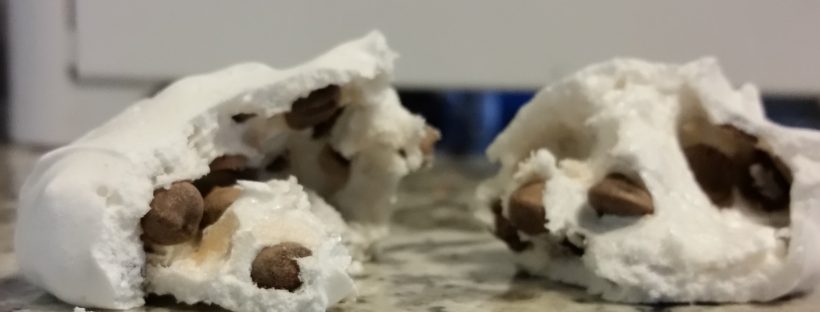My mother is not an easy person to pin down. Describing her is like describing the sky; I know her many sides too well to prioritize one attribute over the other. I want to describe her as serious, but the image of her that is fresh in my mind is of her on my brother’s wedding day, and she looks brilliant and radiant in flowing sea foam fabric over a brilliant skirt full of pinks and yellows and browns. I want to describe her as strict, but she has a habit of following her pleasures when they arrive. She will take trips to New York to visit her son, or pick up a trinket at an artist’s market that strikes her fancy. She fills her life with beautiful things in whatever ways she can. Continue reading
Tag: cookies
Sweet Research and the Joy of Cooking Just Enough
Sweet Research and The Joy of Cooking Just Enough
“The calories and portion sizes of classic recipes may reflect prevailing tastes and norms. Yet, they may also establish or reinforce exaggerated norms in other settings…”
-Brian Wansink and Collin R. Payne, “The Joy of Cooking Too Much: 70 Years of Calories Increases in Classic Recipes”
In their research article originally published in Annals of Internal Medicine, Brian Wansink and Collin Payne analyze the calorie increases across 18 recipes printed in both the 1936 and 2006 editions of The Joy of Cooking. Using a variety of methods that I barely understand, Wansink and Payne tracked both ingredient changes and serving size adjustments for their analysis. These researchers did a lot of statistical analyses, made some impressive charts, and seemed very intent on telling me that “P<0.001,” though I have no idea what that means. In this highly formal and informative article, Wansink and Payne conclude that “the mean average calorie density in 18 classic recipes has increased 35.2% per serving over the past 70 years” (121).
…So I understand that eating too many calories is bad. And my hometown actually received a shout-out on the TV series Parks and Recreation for our history with high obesity levels. But I simply could not find a way to relate to or really care about Wansink and Payne’s article the first time I read it. This response had much more to do with my utter disregard for numbers than for their abilities as researchers and writers. But still, for all their talk about recipes, Wansink and Payne did not mention a single specific food in this article. I don’t even know which “classic foods” have become unhealthier. Why should I care about anonymous recipes in The Joy of Cooking? The only cookbook I use is a recipe collection from my roommate’s grandma. And Pinterest. Continue reading
“Nut”-thing to It: How to Eat Acorns and Enjoy It
“I worked my hands down through the sleek, cool nuts until my arms were in up to my elbows, and laid my cheek against the acorns in a kind of embrace. I smelled their faint dust, thought of all the rain and darkness and hunger they would forestall, and felt fiercely proud.”
– Jean Hegland, Into the Forest (193)
There are some things you should know about me before we get started: I have never been a proponent of natural, organic, vegetarian, or vegan eating. I have never fallen into any health food fads because I have never given a second thought to health food. I come from three generations of farmers, and the only farming I have done has been weeding my mother’s flower garden. Continue reading
The Chocolate Chip Cookie Experience: Rediscovering the Pleasures of Eating Via Home Baking
“Prepare your own food. This means reviving in your own mind and life the arts of kitchen and household.”—Wendell Berry, “The Pleasures of Eating”
Food today is available more readily, and in more varieties, than ever before, as supermarkets, and restaurants offer an abundance of convenient eating options. But this proliferation of quick and easy food products, while certainly advantageous at times, is not without problems. In his essay “The Pleasures of Eating,” farmer and author Wendell Berry draws his audience’s attention to a major issue confronting our population: the modern-day phenomenon of “industrial eating.”
Berry describes the industrial eaters of today as “passive consumers”(64), disengaged from and unaware of the stories behind their meals. While, as he states, “Eating ends the annual drama of the food economy that begins with planting and birth” (64), many people do not think of themselves as active participants in this drama. Instead, “eating has become a degraded, poor, and paltry thing” (66), which people hurry through with little or no awareness. Continue reading



